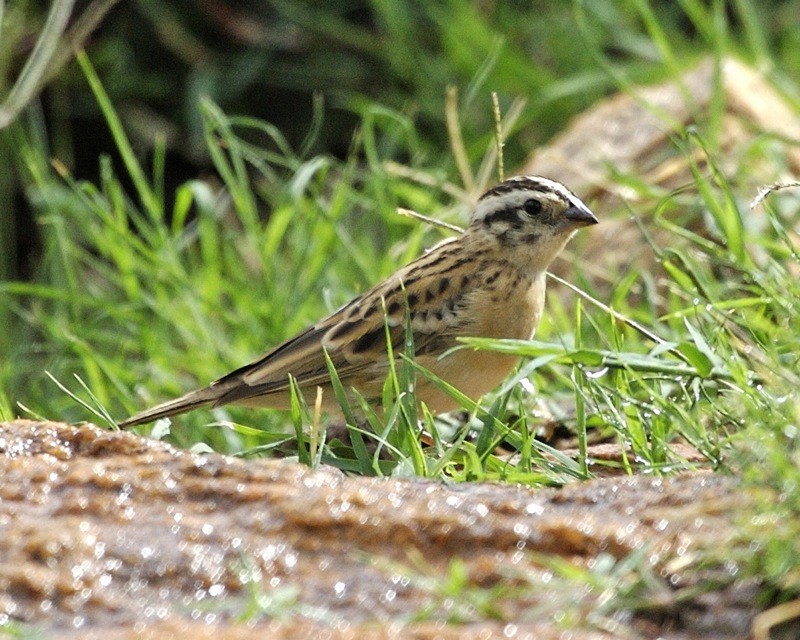Long-tailed Paradise Whydah
A species of Indigobirds and whydahs Scientific name : Vidua paradisaea Genus : Indigobirds and whydahs
Long-tailed Paradise Whydah, A species of Indigobirds and whydahs
Botanical name: Vidua paradisaea
Genus: Indigobirds and whydahs
Content
Description General Info
 Photo By Lip Kee Yap , used under CC-BY-SA-2.0 /Cropped and compressed from original
Photo By Lip Kee Yap , used under CC-BY-SA-2.0 /Cropped and compressed from original Description
Viduidae species differ from one another in size, in breeding plumage and color, and in the songs used for mating. These long-tailed paradise whydahs are hard to distinguish between males and females. Usually these paradise whydah finches grow to about 13 centimeters in length and weigh about 21 grams. Female whydahs tend to have a grey bill and feathers that are greyish-brown with blackish streaks along with their under tail feather being more white. Similarly, males during the non-breeding season tend to have mostly browner plumage with black stripes on the crown, black parts along the face, and deeper brown color for the chest and creamer color for the abdomen However, breeding males have black heads and back, the rusty colored breast, a bright yellow nape, and white abdomen with broad, elongated black tail feathers that can grow up to 36 centimeters or more. 
Size
14 cm
Nest Placement
Ground
Feeding Habits
Long-tailed Paradise Whydah primarily feeds on small grass seeds such as Echinochloa colonum and Setaria. Juveniles are fed insects initially, with seeds later on. Unique behaviors include laying females occasionally consuming host eggs and foraging intensifies before sunset. Post-breeding, long-tailed Paradise Whydah forms flocks, often with congeners, to forage.
Habitat
Long-tailed Paradise Whydah thrives in grasslands, savannas, and open woodlands, particularly favoring bushed grasslands near agricultural areas. These birds habitually occupy acacia woodlands, semi-arid scrublands, and open woodlands including miombo and mopane types. Avoiding wet areas, they are found in environments influenced by human agriculture and prefer drier climates at elevations below 1400 meters.
Dite type
Granivorous
General Info
Feeding Habits
Bird food type
Behavior
The long-tailed paradise whydah are known to be brood parasites where they would lay their eggs in nests of other songbirds. Furthermore, they usually roost together in flocks during both breeding and non-breeding seasons. Males develop the ability to mimic songs of their host. Studies showed that female whydahs respond more strongly to songs mimicked by males of their own species than they do to closely related species. Females use this mimicry to eliminate among potential mates and prefer those raised by the same host species. Researchers discovered that hybridization can occur when female whydahs do not choose mates based on their song mimicry but instead on male traits such as plumage and flight displays if it is more important to them than song, or is restricted by the availability of males singing the appropriate host songs or if males is involved with unsolicited copulation with females of other parasitic species. Researchers discovered that these paradise whydahs mimic the songs of Melba Finch. Additionally, these paradise whydahs are granivorous where they feed on small seed that ripen and fall on the ground. For foraging, these finches use something called “double scratch” where they utilize both of their feet almost simultaneously scratching the ground to find seeds in dust and hop backwards to pick up the seed. Another technique they use is their tongue. They would dehusks grass seeds with their bill rolling the seeds with their tongue one at a time back and forth against the ridge of the palate. 
Distribution Area
The long-tailed paradise whydahs are found in grassland, savanna and open woodland where they live in bushed grassland around cultivation. Majority of the time, these whydahs stay away from surface waters. 
Species Status
Not globally threatened.
Scientific Classification
Phylum
Chordates Class
Birds Order
Perching birds Family
Indigobirds and whydahs Genus
Indigobirds and whydahs Species
Long-tailed Paradise Whydah